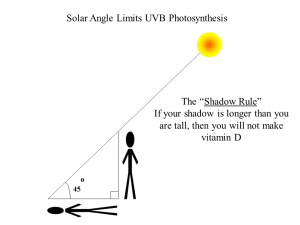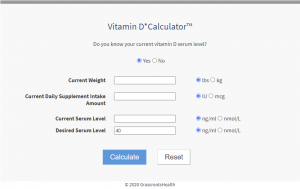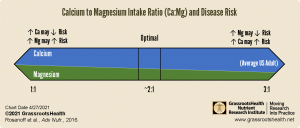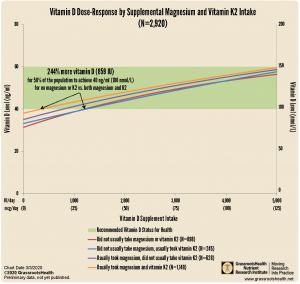Published on December 27, 2023
It’s Almost a New Year! As we welcome 2024, let’s review the blogs with the most hits in 2023…

Now that the year 2023 is almost over, let’s take a look at the top 10 most popular blogs from this year. If you haven’t seen these yet, now is the time!
And, before the month is done, don’t forget to give the gift of health with a GrassrootsHealth gift card! Anyone who purchases a gift card now through December 31st will receive a 15% off discount code for themselves and the recipient, valid towards their next home test kit purchase (excluding the T1D Prevention Test Kit).
Wishing you all a very Happy New Year’s to come!
#1 Is Your Vitamin D Level Too High? (#1 Blog from 2022 as well!)
 We sometimes receive questions from participants about whether a vitamin D test result is too high if it came back higher than the recommended range of 40-60 ng/ml. In this blog we will explore what levels may be considered too high and what can be done if you want to reduce your levels. Are vitamin D levels between 60 and 100 ng/ml too high? Are vitamin D levels over 100 ng/ml too high? What is vitamin D toxicity, and what if a lower vitamin D level is desired?
We sometimes receive questions from participants about whether a vitamin D test result is too high if it came back higher than the recommended range of 40-60 ng/ml. In this blog we will explore what levels may be considered too high and what can be done if you want to reduce your levels. Are vitamin D levels between 60 and 100 ng/ml too high? Are vitamin D levels over 100 ng/ml too high? What is vitamin D toxicity, and what if a lower vitamin D level is desired?
#2 Your Shadow Can Tell You if it’s the Right Time to Make
Vitamin D (#2 Blog from 2022 as well!)
 Vitamin D, also known as the “sunshine vitamin,” is synthesized in the skin following direct exposure to UVB rays. However, the UV index must be over 3 to make vitamin D, which usually occurs around midday between 10am and 2pm. It is important to note that depending on the time of year, latitude, weather, air pollution, and geographical location, UV index varies tremendously.
Vitamin D, also known as the “sunshine vitamin,” is synthesized in the skin following direct exposure to UVB rays. However, the UV index must be over 3 to make vitamin D, which usually occurs around midday between 10am and 2pm. It is important to note that depending on the time of year, latitude, weather, air pollution, and geographical location, UV index varies tremendously.
Check out these easy ways to tell if you are making vitamin D from the sun!
#3 DHA vs EPA – is there a difference in what to take and why? (#5 Blog from 2022)
 Healthy omega-3 levels, defined as an Omega-3 Index of at least 8%, have been associated with heart health, a longer life, brain health, breast cancer, reduced inflammation, and even an improved immune response to viral infection. Much of what you hear about the health effects of omega-3 fatty acids is as a whole combination of omega-3s versus the individual omega-3 fatty acids, such as EPA and DHA. However, some of the latest research has begun to focus on differentiating the effects of each…
Healthy omega-3 levels, defined as an Omega-3 Index of at least 8%, have been associated with heart health, a longer life, brain health, breast cancer, reduced inflammation, and even an improved immune response to viral infection. Much of what you hear about the health effects of omega-3 fatty acids is as a whole combination of omega-3s versus the individual omega-3 fatty acids, such as EPA and DHA. However, some of the latest research has begun to focus on differentiating the effects of each…
#4 Is There a Ratio of Vitamin D to Vitamin K? (#7 Blog from 2022)

How can you know that you are getting enough of both vitamin D and vitamin K?
The video featured in this blog provides a quick and easy discussion of the topic, along with additional information and details about vitamins D and K.
#5 Do You Need to Take Vitamin K2 with Vitamin D?

In the video featured in this blog, Dr. John Campbell reviews the scientific evidence to determine if supplementing with vitamin K2 along with vitamin D is absolutely necessary.
#6 Loading Dose Vitamin D*Calculator!
 Discover how much vitamin D may be necessary to help you achieve your target vitamin D level. The new D*calculator provides two options for increasing your vitamin D levels – a “Loading Dose” and a “Maintenance Dose” allowing users to choose how quickly they would like to achieve their desired levels.
Discover how much vitamin D may be necessary to help you achieve your target vitamin D level. The new D*calculator provides two options for increasing your vitamin D levels – a “Loading Dose” and a “Maintenance Dose” allowing users to choose how quickly they would like to achieve their desired levels.
#7 Understanding the Balance between Magnesium, Calcium and Vitamin D

Calcium and magnesium are both essential minerals required by all cells to function properly. They work together to help the heart muscles beat, the nerve cells to communicate, and the bones to stay strong. Both are also well-known co-nutrients of vitamin D.
This blog focuses on the intake ratios and intricate balance of magnesium and calcium, and their relationship to vitamin D.
#8 Could Cholesterol Levels Improve with Vitamin D, Magnesium and Omega-3s?
 Several questions about vitamin D and cholesterol levels have been asked of us in the past, such as “Does increasing my vitamin D level or supplementing with vitamin D raise cholesterol levels,” or “Do vitamin D levels change with cholesterol levels?” A 2021 paper helps to shed light on the topic and is reviewed in this blog along with other research highlighting the relationship between cholesterol, triglycerides, magnesium and omega-3s.
Several questions about vitamin D and cholesterol levels have been asked of us in the past, such as “Does increasing my vitamin D level or supplementing with vitamin D raise cholesterol levels,” or “Do vitamin D levels change with cholesterol levels?” A 2021 paper helps to shed light on the topic and is reviewed in this blog along with other research highlighting the relationship between cholesterol, triglycerides, magnesium and omega-3s.
#9 The Vitamin D and Kidney Stones Myth
 The myth addressed in this blog – that taking vitamin D causes kidney stones – is based on the interplay of vitamin D with another nutrient, calcium. However, not only has the idea has been debunked with the findings of several research studies, but the opposite seems to be true! If the fear of kidney stones is preventing you from taking vitamin D supplements, rest easy and take the supplements you may need to achieve a healthy vitamin D level.
The myth addressed in this blog – that taking vitamin D causes kidney stones – is based on the interplay of vitamin D with another nutrient, calcium. However, not only has the idea has been debunked with the findings of several research studies, but the opposite seems to be true! If the fear of kidney stones is preventing you from taking vitamin D supplements, rest easy and take the supplements you may need to achieve a healthy vitamin D level.
#10 Are both supplemental magnesium and vitamin K2 combined important for vitamin D levels?
 In several previous blogs, we have showed that supplemental magnesium and vitamin K2 are very important cofactors for vitamin D, and both individually affect vitamin D levels. In this blog we investigate whether combined intake of both supplemental magnesium and vitamin K2 has a greater effect on vitamin D levels than either individually.
In several previous blogs, we have showed that supplemental magnesium and vitamin K2 are very important cofactors for vitamin D, and both individually affect vitamin D levels. In this blog we investigate whether combined intake of both supplemental magnesium and vitamin K2 has a greater effect on vitamin D levels than either individually.
Start Your New Year Knowing Your Nutrient Status!
 Having and maintaining healthy vitamin D levels and other nutrient levels can help improve your health now and for your future. Choose which to measure, such as your vitamin D, omega-3s, and essential minerals including magnesium and zinc, by creating your custom home test kit today. Take steps to improve the status of each of these measurements to benefit your overall health. You can also track your own intakes, symptoms and results to see what works best for YOU.
Having and maintaining healthy vitamin D levels and other nutrient levels can help improve your health now and for your future. Choose which to measure, such as your vitamin D, omega-3s, and essential minerals including magnesium and zinc, by creating your custom home test kit today. Take steps to improve the status of each of these measurements to benefit your overall health. You can also track your own intakes, symptoms and results to see what works best for YOU.
Enroll and test your levels today, learn what steps to take to improve your status of vitamin D (see below) and other nutrients and blood markers, and take action! By enrolling in the GrassrootsHealth projects, you are not only contributing valuable information to everyone, you are also gaining knowledge about how you could improve your own health through measuring and tracking your nutrient status, and educating yourself on how to improve it.





